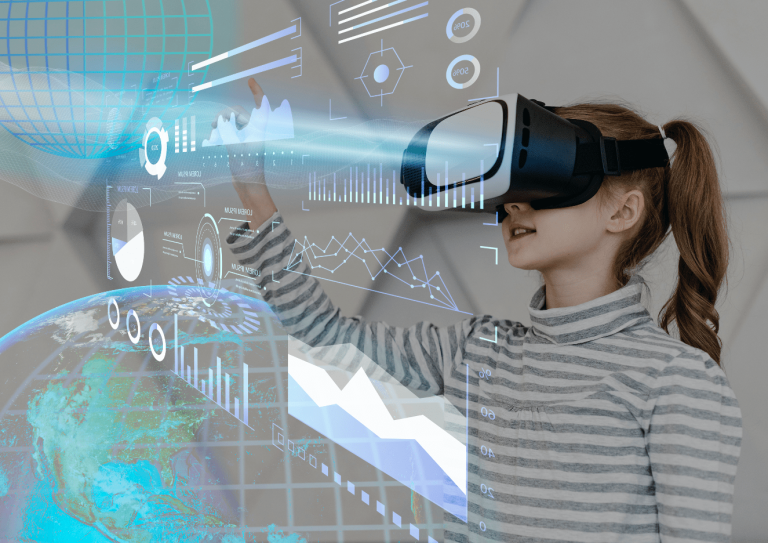Introduction:
In the digital age, the realm of learning is undergoing a profound transformation, driven by the integration of immersive digital experiences. From digital employee experiences to customer interactions, the evolution of digital experience platforms and management is reshaping the way individuals acquire knowledge. In this comprehensive exploration, we’ll delve into the dynamics of enhancing learning through immersive digital experiences, unraveling the impact of digital employee experiences, customer interactions, and the role of digital experience platforms in this educational revolution.
1. The Essence of Digital Experience in Learning
Defining Digital Experience:
Digital experience transcends mere interaction with technology; it encompasses the entire journey of users as they engage with digital platforms. In the realm of learning, digital experiences are the bridge that connects individuals to a wealth of knowledge, resources, and interactive learning environments.
2. Digital Employee Experience: Empowering Workplace Learning
Reimagining Workplace Learning:
The digital employee experience is revolutionizing workplace learning. From onboarding programs to continuous skill development, digital platforms create immersive learning environments. Adaptive learning paths, interactive modules, and real-time feedback contribute to a dynamic and personalized learning journey.
3. Digital Customer Experience: Education Beyond Transactions
Beyond Transactions to Education:
Digital customer experiences extend beyond transactions; they serve as educational touchpoints. Companies leverage digital platforms to educate customers about products, services, and industry trends. Interactive guides, tutorials, and immersive content create informed and empowered customers.
4. The Role of Digital Experience Platforms
Unifying Learning Ecosystems:
Digital experience platforms (DXPs) play a pivotal role in unifying diverse learning ecosystems. These platforms integrate content, analytics, and user engagement tools to create seamless and personalized learning experiences. DXPs empower organizations to deliver cohesive digital experiences across various channels.
5. The Dynamics of Digital Experience Management
Orchestrating Seamless Experiences:
Digital experience management involves orchestrating seamless and consistent digital interactions. In the context of learning, effective experience management ensures that learners encounter cohesive and intuitive digital environments. It involves monitoring user engagement, analyzing feedback, and optimizing the learning journey.
6. Personalization in Digital Learning
Tailoring Learning Journeys:
Immersive digital experiences allow for unprecedented levels of personalization in learning. Machine learning algorithms analyze user behavior and preferences, tailoring content delivery, and learning paths. Personalized learning journeys enhance engagement and knowledge retention.
7. Interactive Learning Modules and Gamification
Engaging Through Interactivity:
Immersive digital experiences leverage interactive learning modules and gamification to enhance engagement. These elements transform learning into a dynamic and enjoyable process. Gamified quizzes, simulations, and virtual scenarios make learning interactive and memorable.
8. Real-world Applications of Immersive Digital Learning
Virtual Reality (VR) and Augmented Reality (AR):
Cutting-edge technologies like VR and AR bring a tangible dimension to digital learning. Virtual simulations, augmented reality guides, and immersive experiences provide learners with real-world applications, fostering practical understanding and skills development.
9. The Impact on Skill Development and Retention
Building Skills for the Future:
Immersive digital experiences contribute significantly to skill development. Learners are exposed to realistic scenarios, hands-on simulations, and collaborative learning environments. The result is a workforce equipped with practical skills that translate seamlessly into real-world applications.
10. Navigating Challenges and Future Trends
Overcoming Accessibility and Inclusivity Challenges:
While immersive digital experiences hold tremendous potential, addressing accessibility and inclusivity challenges is crucial. Designing platforms that cater to diverse learning styles, abilities, and technological access ensures that the benefits of digital learning are accessible to all.
Future Trends in Immersive Digital Learning:
As technology advances, the future of immersive digital learning holds exciting prospects. From AI-driven personalization to the integration of extended reality (XR), the learning landscape will continue to evolve, offering learners increasingly sophisticated and enriching digital experiences.
Conclusion: Unlocking the Potential of Immersive Digital Learning
In the era of digital transformation, immersive digital experiences are revolutionizing the way we learn. From digital employee experiences shaping workplace learning to digital customer experiences serving as educational touchpoints, the impact is profound. Digital experience platforms and management play a central role in orchestrating cohesive learning ecosystems. As we navigate the dynamic landscape of immersive digital learning, the fusion of personalization, interactivity, and real-world applications is unlocking the potential for individuals and organizations to thrive in a knowledge-driven future. The journey towards enhanced learning experiences is not just about embracing technology; it’s about creating immersive digital environments that inspire, empower, and elevate the educational journey for all.


